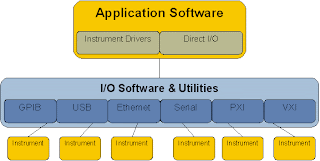1. While it took the radio 38 years, and the television a short 13 years, it took the World Wide Web only 4 years to reach 50 million users.
2. The world's first computer, called the Z1, was invented by Konrad Zuse in 1936. His next invention, the Z2 was finished in 1939 and was the first fully functioning electro-mechanical computer.
3. "Stewardesses" is the longest word that is typed with only the left hand.
4. Bill Gates' house was designed using a Macintosh computer.
5. In the 1980s, an IBM computer wasn't considered 100 percent compatible unless it could run Microsoft Flight Simulator.
6. The first computer mouse was invented by Doug Engelbart in around 1964 and was made of wood.
7. Another name for a Microsoft Windows tutorial is 'Crash Course'
8. An Amd 1400 chip running without a heatsink gets as hot as 370 degrees.
9. The most expensive game ever developed was "ShenMue" for sega dreamcast.It costs $20 million.
10. Top Ten Supercomputers of Today:-
Arranged according to the speed:-
1. Bluegene/L DD2 Beta-system(IBM).
2. Columbia (NASA).
3. Earth Simulator (NEC).
4. MareNostrum(Barcelona Supercomputer Center).
5. Thunder (Lawrence Livermore National Laboratory).
6. ASCI Q(Los Alamos National Laboratory).
7. System X(Virgina Tech).
8. Blugene/L DD1 Prototype(IBM).
9. eServer pSeries 655 cluster(Naval Oceanographic Office).
10. Tungsten(National Center For Supercomputing Applications).
11. What does 50 G.B of storage really mean?It means we can stack 3 piles of
single spaced type written pages taller than the Eiffel tower and data to
support this information is about 50 gigabytes.
12. The code name for the 12 engineers who designed the IBM pc was :-
'The dirty dozen'.
13. Isk drive recording head fly height (gap between the head and disc when the drive is spinning ) is less than 1 microinch while:-
A red blood cell is 300 microinches is diameter.
A particle of tobacco smoke is 250 microinches.
A particle of smog is 100 microinches.
A human hair is 4000 microinches.
14. 128 bit SSL encryption is so strong that it would take much , much longer than the age of universe to crack a message encrypted using it.Even 20 years from now, if computers are a million times faster. it would still take longer than the age of the universe to crack it.
15. South korea's SK telecom offers an inaudible ring tone to its customers which, it claims, can repel mosquitoes.
16. In 1971, the first speech recognition software named, "Hearsay" was developed in India.
17. A program named “Rother J” was the first computer virus to come into sight “in the wild” — that is, outside the single computer or lab where it was created. Created in 1981 by Richard Skrenta, it attached itself to the Apple DOS 3.3 operating system and spread via floppy disk. This virus was created as a practical joke when Richard Skrenta was still in high school. It was injected in a game on a floppy disk. On its 50th use the Elk Cloner virus would be activated, infecting the computer and displaying a short poem beginning “Elk Cloner: The program with a personality.”
18. The computer mouse, the windowing GUI, laser printing, and the network card were all developed at one company; Xerox in Palo Alto, California.
19. The popular programming language COBOL was invented by Admiral Grace Hopper, the first female admiral in the US Navy.
20. The term ‘booting’ or ‘bootstrapping’ a computer derives from the story of Baron Munchhausen who at one instance, pulled himself out of a swamp by the straps on his boots.
 guys view this image and get solutions to solve ur problems in corporate feild not only in corporate field but also in ur daily life
guys view this image and get solutions to solve ur problems in corporate feild not only in corporate field but also in ur daily life
